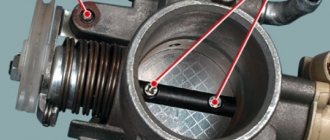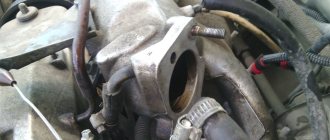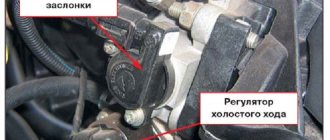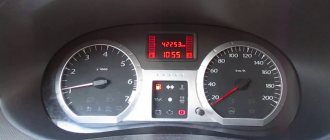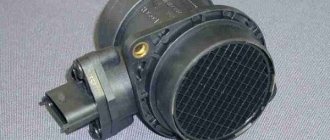Sometimes unpleasant moments happen when, in the morning bustle, your faithful companion, the Lada Granta, suddenly refuses to start. Having left his car, which is no more than three months old, overnight, the owner is thoroughly convinced that no incidents should happen. But once you get behind the wheel and try to start the car, you suddenly discover that the starter does not turn, and the fuel supply pump does not show signs of activity. Leaving offended, you return in the evening and try to start the car - and lo and behold, it’s already working, as if nothing had happened. What to do if the car won't start.
Does a cold engine start on the 2nd try? It's decided!
Glad to welcome everyone!
This post will be sooooo long, sooooo boring and almost without photos. Therefore, many may not be interested in it. I just wanted to share my experience on this issue with you. Perhaps this post will even help someone. Go! Actually, the crux of the problem is in the name. It manifested itself like this: I go out in the morning, start it, the engine, as usual, immediately seizes, runs for 2-3 seconds and then suddenly stalls. There were absolutely no errors in the BC. I am attaching a roughly similar video of how this happened:
Only in my case, on the second attempt, the engine ALWAYS started 100% of the time and then worked as if nothing had happened. By the way, a manipulation like turning on the fuel pump several times and only then starting it didn’t help at all.
So, this problem first appeared a couple of years ago. Somehow, at first I wasn’t too focused on this; due to my inexperience, I was guilty of bad gasoline, clogged fuel and air filters, spark plugs, etc. And now the time has come to replace it all. I change it, start it... Everything is the same, absolutely nothing has changed!
I didn’t look further for the reason, I just scored.
After some time the problem disappeared. At first I was happy. But the happiness did not last long... Six months later everything came back again. I began to observe under what conditions this manifests itself. It turned out the following:
1.
At street temperatures of +20 and above, the problem practically did not appear
2.
At an engine temperature of 40 degrees.
and above - the same. 3.
I noticed one strange pattern: if before starting you crank the crankshaft with the starter several times
without starting it,
then the start occurs perfectly.
As if for the engine to start successfully... How would it be more correct to say... It was necessary to make a little more crankshaft revolutions than usual. 4.
There was another interesting feature: if you let the engine cool down to 10-15 degrees. and try to start it - it starts and doesn’t stall, but for 1-2 minutes it jerks, as if it’s throttling, and the revolutions jump in the range of 600-900.
In general, all this was somehow strange and incomprehensible. Judging by the symptoms, I had 2 main versions of what was happening:
1. The most popular are fuel pressure regulator/fuel filter/fuel pump mesh. 2. The least likely, but still valid assumption is sticking of one or more valves on a cold engine.
I haven’t encountered this myself and generally had a hard time believing it, but in my situation anything could have happened...
So, I started working on the first version. I took out the pump, and the mesh was like new! Not a speck, just a little yellowed. In general, I didn’t even touch her. I replaced the fuel pressure regulator, put the module in place, started it... Everything is the same!
Damn! OK!
Thoughts about a sticking valve began to visit me... I thought this way and that, and still came to the conclusion: well, this can’t happen! No way!
The car is 3 years old and has 45 thousand miles, so what the hell are sticking valves? Bullshit!
I sat and thought some more. I started to remember what I had done with the car over the past six months. Replacing oils, filters, spark plugs, alternator belt tension roller, lubricating timing rollers... STOP! I remembered! Well, of course!
While I was looking for this nasty squeak when cold, the first thing I did was remove the timing belt rollers
in order to lubricate them.
The person who suggested this idea to me mentioned in his entry that his intake camshaft was installed incorrectly from the factory - it was shifted one tooth back. For this reason, he had difficulty starting a hot engine. And I thought: what if, after lubricating the rollers, I incorrectly installed the camshafts according to the marks and because of this it doesn’t start well when cold?
It was decided to do the whole procedure again with the correct markings.
But here’s the problem... Aligning the camshafts to the marks is a simple procedure... But how to align the crankshaft to the marks?
Murzilka tells us that there are 2 ways: align the marks on the flywheel through the hatch in the box or align the mark on the crankshaft pulley with the mark on the oil pump. But here’s the problem: I have an automatic transmission and there are no hatches in sight. And to get to the crankshaft pulley, you need to unscrew the drive disc, and this is very problematic, especially on a car with an automatic transmission.
But we don’t give up so easily! We Google and find 3 more ways
Set the crankshaft to the TDC position of the 1st cylinder:
1.
Screw in a dial indicator instead of the spark plug of the 1st cylinder and manually turn the crankshaft until we reach the highest position, monitoring the deflection of the needle.
2.
Insert a small rod/twig/stick/oil dipstick, etc. into the cylinder.
and act on the same principle. 3.
Set TDC to the master disk.
Neither I nor my friends have an indicator. Set TDC according to approximate
deflecting a rod/twig/stick/dipstick is not an option at all. But method 3 interested me! The bottom line is that the TDC of the 1st cylinder corresponds to the position of the 20th tooth on the drive disk opposite the DPKV.
Is it realistic to set this position? Yes Easy! We take off the belt, set the crankshaft to the desired position and look at the marks on the camshafts. Hmmm... As I expected, both the intake and exhaust ran a couple of teeth in different directions! We set everything according to the marks, put on the belt, rollers and start it.
The result of all the physical movements made: a cold engine that has been standing all night starts the first time and does not stall! Plus, the consumption at idle decreased from 0.9 to 0.8 l/h. Problem solved!
Thanks to everyone who had the patience to read this writing to the end! Good luck to everyone on the roads and see you again!
Source
Throttle problems
Quite often, the reason that the engine starts to stall is the throttle valve itself. It is quite possible that the air filter has worn out, so the entire surface of the damper inside is dirty. To fix this breakdown, it is enough to clean the damper completely from the inside. Please note that after thorough cleaning the problem may persist; the engine still stalls when you press the gas. In this case, you need to make sure that the position sensor is in good condition. This sensor is a variable resistor. It is installed on the damper axis. Moreover, maximum wear is observed in the extreme position (corresponding to idle speed). If it fails, it must be completely replaced. The cost of the part is quite low, and replacement occurs literally in a matter of minutes. But it is possible that the engine begins to stall, despite the fact that all sensors are in perfect condition.
Granta starts and immediately stalls? Problem solution, tool
I’ll start telling you in order, if anyone has the same symptoms, you will already know what to do...
And so, it all started with the fact that one day the autostart unsuccessfully started the car three times. I started it and it immediately stalled. It was at work, I went out and started the car myself. The engine began to gurgle, as if there was not enough pressure in the fuel rail, and then died. I started it again and pressed the gas pedal, the car seemed to spit out some kind of cork, twitched a little and started up. And then it began to work normally, without problems and without any signs of lack of gasoline or pressure in the ramp. An employee saw this and said that when I accelerated, black smoke came out of the exhaust. You, he says, are filling the candles as you go. This seemed very strange to me, because... The mileage on the car is only 55 thousand. There shouldn't be any problems with the engine yet. It's a bit early. Well, okay, because... I had to go and didn’t have time to figure it out, that day I was ready for it. The employee advised me to contact a diagnostician and gave me a number. But a call to that diagnostician completely discouraged me from going to him - he told me on the phone that: “maybe I’ll see the problem, maybe not, and in general I have lunch and you’ll come when I need it, and not when it’s convenient for you, but Maybe you’ll get a result, maybe you won’t, but you’ll definitely pay money for the diagnosis.” Well, he went to hell then, such a diagnostician. I gave up and gave up on this matter. And in the morning the car started up perfectly, without problems. Well, if that’s the case, then why bother getting into it?
However, later the situation repeated itself. And because always on a roll, then somehow I didn’t even have enough time to get on the internet and see what it could be. One day, right in the middle of things, arriving in my yard again, I simply decided to check the condition of the candles.
I checked - there were no signs of oil on the spark plugs or in the wells. All is clear. Well, okay, maybe the gasoline was just bad or a little water had accumulated in the tank - condensation. Filled up with new good gas. I wanted to add more alcohol to the tank, so that if there was water there, the water would mix with alcohol and burn together with the gasoline. But everyone didn’t get around to getting to the pharmacy. And so he showed off - one fine day the car refused to start completely. From the word absolutely. The engine grabbed hold, but with a slight gurgling, without even having time to really gain momentum, it immediately stalled. The pedal to the floor didn't help. And the candles could have been stupidly filled with such jokes. What to do? I started smoking forums. And guess what?
Spark plug
To make sure the spark plugs are working properly, you need to unscrew them all, check the gap size, as well as the presence of carbon deposits. And your car stalls while driving. The reason may be hidden in the candles. If there is heavy carbon deposits, but the gap is within acceptable values, it is necessary to clean the spark plug electrodes. But the best way out is to install new spark plugs. In the same case, if the gap is very large, there is excessive wear of the electrode, cleaning will not help, it is necessary to completely replace the set of spark plugs.
Lada Granta starts when cold and triples or doubles (rev.
Greetings to everyone who came here. We will talk about the problem when the Lada Granta starts up when cold and triples or doubles, the revolutions stay around 500, the car jerks. The first step in such a situation is to press the gas. Whatever I did, the speed was restored, but sometimes it stalled. After it stalled, the second start was already normal, the rpm was 1100 without any tripping. I have some kind of A17 spark plugs, in short, standard VAZ ones, bought from an official. Wire elephants


